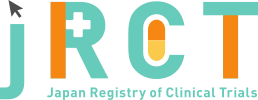臨床研究等提出・公開システム
|
Dec. 19, 2019 |
|
|
May. 26, 2022 |
|
|
jRCTb041190097 |
Treatment of epidermolytic ichthyosis using epidermise sheet (Jace) cultured from autologous revertant somatic mosaic site (epidermise sheet cultured from autologous revertant somatic mosaic site) |
|
epidermise sheet cultured from autologous revertant somatic mosaic site (epidermise sheet cultured from autologous revertant somatic mosaic site) |
|
|
Kodera Yasuhiro |
Mar. 31, 2022 |
|
3 |
|
Subjects satisfying all the following criteria: (1)Those who have been diagnosed with epidermolytic ichthyosis by the investigators and have revertant mosaicism. (2)Causative gene mutations of epidermolytic ichthyosis and revertant mosaicism have been confirmed by genetic analysis . (3)Those who have one or more sites of hyperkeratosis that regenerative medicine products should be transplanted. (4)Those who have received sufficient informed consent. (5)Over 20 years old at the time of consent acquisition. |
|
Consent holders (3): screening failures (0), registrants (3), discontinuation (0), Complate (3). Of the 3 registrants, full analysis set (3), per protocol set (3), the observation phase safety analysis target (3), and the treatment phase safety analysis target population (3). |
|
Overall adverse events 10, 3 (100.0%): application site erosion 1, 1 (33.3%), wound bleeding 1, 1 (33.3%), wound complications 5, 2 (66.7%), skin ulcers 1, 1 (33.3%), skin bacterial infections 2, 2 (66.7%), and serious illnesses were 0, 0 (0.0%). Causal relationship with regenerative medicine product can be denied in either case. |
|
The primary endpoint, "hyperkeratosis improvement rate at 4 weeks after transplantation," in the three subjects was 39.52%, 100.0%, and 100.0%, respectively. On the other hand, the secondary endpoints "hyperkeratosis improvement rate 24 weeks after transplantation" were 0%, 30.37% and 25.30%, respectively. |
|
In this study, cultured epidermal sheets prepared from the revertant site of patients who were diagnosed with epidermolytic ichthyosis and had revertant mosaicism were transplanted to the hyperkeratotic lesions. The primary endpoints, "hyperkeratosis improvement rates at 4 weeks after transplantation," in the three subjects were 39.52%, 100.0%, and 100.0%. The secondary endpoints, "hyperkeratosis improvement rates 24 weeks after transplantation" were 0%, 30.37% and 25.30%. |
|
https://jrct.mhlw.go.jp/latest-detail/jRCTb041190097 |
Akiyama Masashi |
||
Nagoya University Graduate School of Medicine |
||
65 Tsurumai-cho, Showa-ku, Nagoya-city, Aichi |
||
+81-52-744-2314 |
||
makiyama@med.nagoya-u.ac.jp |
||
Takahashi Hironobu |
||
Nagoya University Hospital |
||
65 Tsurumai-cho, Showa-ku, Nagoya-city, Aichi |
||
+81-52-744-2479 |
||
Iga-shinsa@adm.nagoya-u.ac.jp |
| 3 | ||
Interventional |
||
single arm study |
||
open(masking not used) |
||
uncontrolled control |
||
single assignment |
||
treatment purpose |
||
Patients who are diagnosed with epidermolytic ichthyosis and have a revertant somatic mutation, the responsible gene mutation * was identified by genetic testing. |
||
Patients hypersensitive to penicillin, kanamycin, streptomycin, and amphotericin B antibiotics. Patients with a history of hypersensitivity to penicillin antibiotics and aminoglycoside antibiotics. |
||
| 20age old over | ||
| No limit | ||
Both |
||
epidermolytic ichthyosis |
||
Transplantation of cultured epidermis sheet |
||
C564367 |
||
Improvement rate of hyperkeratosis 4 weeks after the final transplant (%) |
||
Improvement rate of site-specific hyperkeratosis 4 weeks after final transplantation (%) |
||
| Dec. 19, 2019 | |
| Mar. 03, 2020 | |
Complete |
| Japan Agency for Medical Research and Development (AMED) | |
| Applicable |
| Nagoya University Certificated Committee for Regenerative Medicine | |
| 65 Tsurumai-cho, Showa-ku, Nagoya-city, Aichi | |
+81-52-744-2479 |
|
| ethics@med.nagoya-u.ac.jp | |
| Approval | |
Jan. 13, 2021 |
